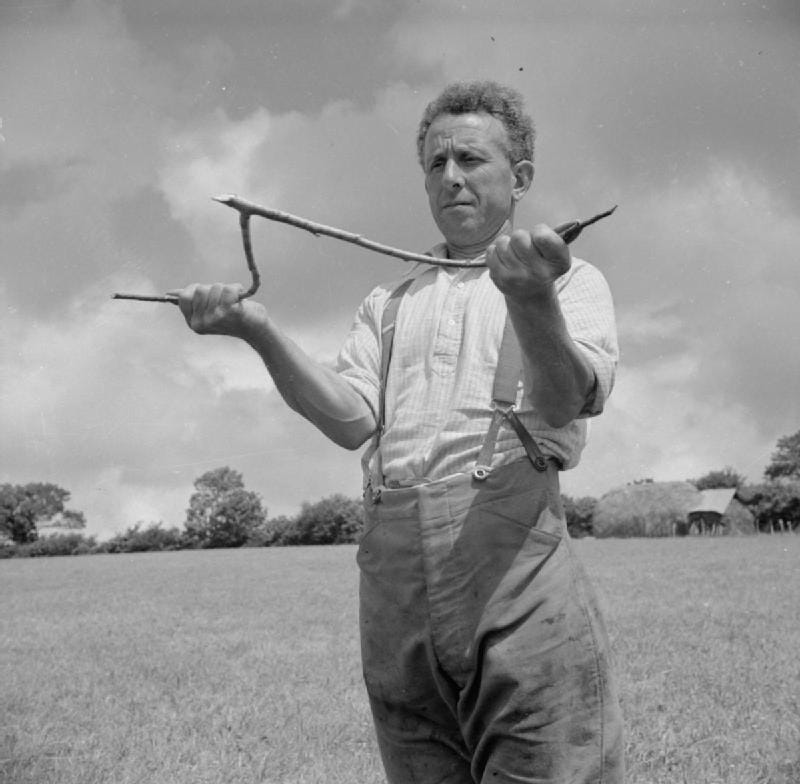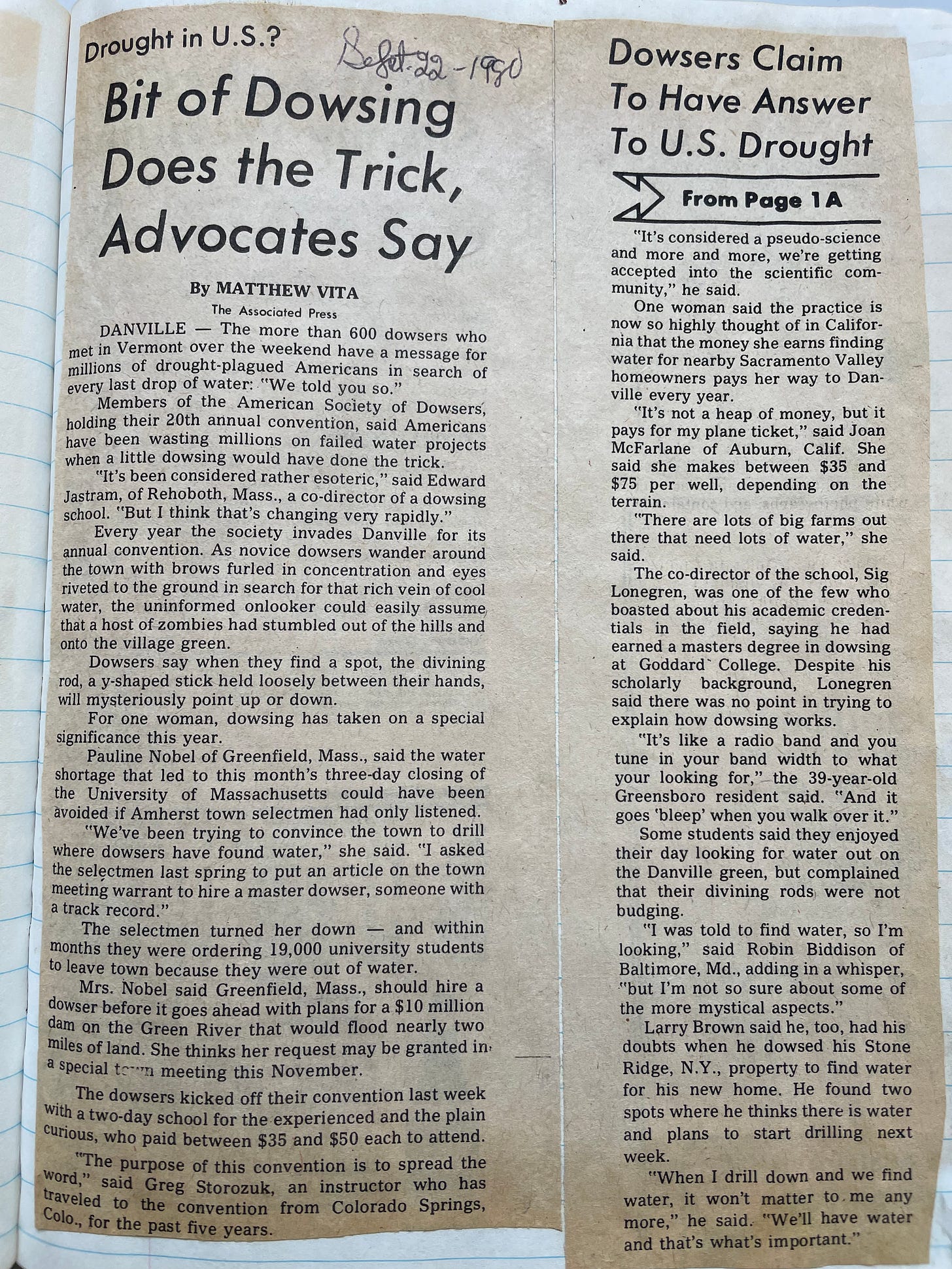The sun, the moon and life's many cycles
The solar eclipse got me thinking about "moon planting" and dowsing
The solar eclipse has me thinking about the many effects of the moon’s cycles on our planet, some pretty obvious, others more obscure. I more or less get how the gravitational pull of the moon affects ocean tides. A complete understanding of how the moon shapes our lives in other ways remains more elusive. Some ties seem obvious, if complex, others more obscure. Many cross into the realm of faith.
How humans have explained phenomena that they don’t readily understand through celestial events dates back to the dawn of time, or at least our time here on the planet.
Reproductive cycles, hormonal and sleep patterns, human emotional and mental health, and countless animal behaviors have all been tied to the phases of the moon. For example, did you know the polarization pattern of moonlight helps the African dung beetle navigate in the dark? Or the corals of the Great Barrier Reef always spawn following a full moon in the last three months of the year?
I don’t know how the phases of the moon affect plant life but farmers for centuries have believed they do. This belief persists and helps many gardeners today decide when during the month they should sow seeds or put plants into the field. “Moon planting,” as it’s called, dates back to the ancients but returned to prominence during the organic gardening movement during the 1970s.
Louise Riotte, a well known gardener from the Midwest who died in 1998 at the age of 89, devoted one of her 12 gardening books to the subject in Astrological Gardening: The Ancient Wisdom of Successful Planting and Harvesting by the Stars. "It is not my intention to argue the merits of 'moon planting' or 'planting by the signs' but rather to set forth as clearly as I can the accumulated wisdom of the centuries regarding astrological gardening,” she wrote. “Something that has endured so long must surely have had a reason for coming into being in the first place.”
I stumbled across this school of thought several years ago, I’m pretty sure on the Farmers’ Almanac website. I was looking for a seed-starting schedule based on the last frost date in suburban Washington, D.C., which I found. But the Almanac published a parallel schedule based on the phases of the moon, which it said is based on “a philosophy of working with, rather than against nature.”
Since I’m not a convert, it’s best to go with their explanation:
Those who swear by this ancient growing method say the water in both the ground and in plants are affected by the gravitational pull of the Sun and Moon, just like ocean tides are. Just as the tides are highest during the new and full phases of the Moon, this theory holds, seeds, too, will absorb the most water during these times.
In practice, all above-ground plants, like lettuce, spinach, cabbage and celery, should be sown when the moon is waxing. Root plants like potatoes, beets and turnips should go in the ground when the moon is waning. That’s how the theory goes. The moon’s place in the Zodiac also plays a role in some way, but to be honest that’s making planting lettuce seeds a little too complicated for fun, at least for me.
I actually tried it out one year, starting my seeds on the schedule from the Almanac’s “based on moon dates” calendar rather than its parallel “based on frost dates” calendar. I’m not sure I noticed any difference in the vitality of my plants that year but I didn’t stick with it long enough to give it a chance.
The eclipse also has me thinking of another ancient practice, the art of water dowsing. It’s the art of using a forked stick, rod or pendulum to find a source of water beneath the earth’s surface. Or that’s what dowsers believe. The U.S. Geological Service writes about it on its website which in and of itself lends some credence to the practice. Though the USGS concludes: “Some water exists under the Earth's surface almost everywhere. This explains why many dowsers appear to be successful.”
Dowsing, as it turns out, is also tied to phases of the moon. I don’t think I knew that back in September 1980 when I attended the American Society of Dowsers’ 20th annual convention in Vermont. I was there for the Associated Press and the convention caught my eye because New England was in the midst of a drought that summer. I give myself an “A” for spotting a news peg, a “D” for execution. The story was pretty mediocre. But I’m okay with that. I was 24 and just starting out.
Thankfully the article was saved for me in a collection of my newspaper clippings lovingly cut out and pasted into a composition book by Mrs. Perry, my landlord. She gave the book to me as a farewell gift when I left Vermont for New York later that year.
With an eclipse under way, this all makes me realize how life has many cycles that are connected in strange and mysterious ways. Sometimes you just have to go with them.





